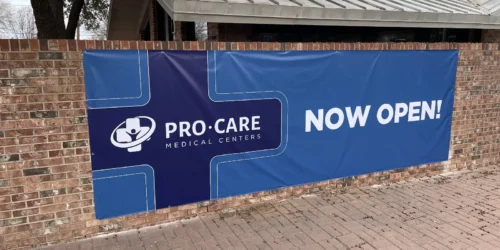Injuries on the outside of your body are easier to see and diagnose. But what about internal car accident injuries? If you don’t see any obvious signs of injury, then you may be tempted to say everything is okay. However, a car accident can lead to significant internal injuries, including internal bleeding. The shock and trauma of getting into a car accident can actually prevent you from fully understanding that you have been injured, especially if it isn’t obvious. You may not be able to recognize the signs and symptoms of internal bleeding on your own. That is why it is important for you to see a doctor as soon as possible after a car accident to rule out any internal injuries. Here’s what you need to know about internal bleeding and what signs to look out for to help stay healthy and safe after a car accident:
Symptoms of Internal Bleeding
A car accident injury can cause you to bleed internally. How do you know if you’re bleeding internally after a car accident? Here are some signs and symptoms that you’ll need to loo out for:
Signs of Internal Bleeding in the Head
If you suffer a blow to the head during a car accident, then you could develop internal bleeding. This can cause internal bleeding symptoms like a sudden, severe headache accompanied by a loss of balance and coordination. Internal bleeding in the head can also cause weakness and numbness, typically along one side of your body. Other signs of internal bleeding in your head may include tingling sensations that extend into your hands and feet. If you start to have difficulty speaking, writing, or understanding others, then you want to seek medical attention as soon as possible. Internal bleeding in the head can become life-threatening and will require emergency medical attention.
Signs of Internal Bleeding in the Chest & Abdomen
A sudden blow to the chest or abdomen during a car accident could cause internal bleeding. The force of the impact could also cause you to strain against your seat belt, putting significant pressure on your chest, abdomen, and internal organs. Signs of internal bleeding in your chest or abdomen include sudden, sharp abdominal pain or chest pain. You may experience shortness of breath, nausea, or vomiting. Internal bleeding in the chest or abdomen area can also cause bruising to develop, especially around your naval or along the sides of your chest and abdomen. If you recognize blood in your urine or stool, then seek medical attention as soon as possible.
Signs of Internal Bleeding in Muscles & Joints
Car accident injuries that affect the muscles and joints can also cause internal bleeding in severe cases. You may notice the sudden onset of pain and swelling in the affected joint. You may also have difficulty moving the joint and experience a significant decrease in range of motion. Internal bleeding in a muscle could cause the muscle to feel warm to the touch, and you may experience tingling or numbness.
Additional Internal Bleeding Symptoms
Internal bleeding can also cause you to experience shock. When you lose a lot of blood, even internally, your brain is unable to function properly, and you can have trouble concentrating, focusing, or even staying conscious. Additional internal bleeding symptoms can include a rapid heart rate, low blood pressure, and overall weakness. Internal bleeding can cause your skin to become sweaty or clammy, and you may struggle to stay awake and feel like you are in a stupor. Internal bleeding could cause you to experience dizziness or lose consciousness.
What Causes Internal Bleeding?
Internal bleeding is a serious symptom of an underlying injury, health condition, or disease. If you were recently in a car accident, then your accident doctor will want to check you for internal bleeding. Blunt force trauma refers to a sudden blow or force to the body that can cause various injuries. A severe car accident can lead to injuries caused by blunt force trauma. You may suffer a hard blow to the head when the force of impact slams your head into the window or dashboard. An unexpected collision can cause you to strain against the seat belt and cause both external and internal injuries.
Car accident injuries like a broken bone could also cause internal bleeding. An open wound will cause external bleeding, while an internal injury will cause internal bleeding. However, it is possible to suffer a fracture or broken bone where the bone breaks the surface of the skin, known as a compound fracture. When this happens, you may experience both internal and external bleeding. If you have a pre-existing health condition like high blood pressure, then you may be more at risk for developing issues with internal bleeding with car accident injuries. Talk to your doctor if you have any health conditions that put you at greater risk for clotting or bleeding issues, especially if you suffered a recent injury in a car accident.
Treatment for Internal Bleeding and Car Accident Injuries
Internal bleeding may require emergency medical attention to stop the bleeding at the source. In minor cases, internal bleeding may stop on its own, but in more severe cases, you may need surgery. The primary goal of emergency medical care at the scene or the hospital will be to get the bleeding under control. Identifying what has caused the internal bleeding will allow your doctors to determine the next appropriate course of treatment for your car accident injuries. Once your internal bleeding is under control, you will be able to see a car accident doctor to treat your car accident injuries.
If you were recently in a car accident, then visit a Pro-Care Medical Center near you. We have teams of car accident doctors available to support you through the treatment and recovery process for a wide range of car accident injuries. Our car accident doctors in Austin and San Antonio include chiropractors, neurologists, orthopedists, and pain management specialists to support you through your healing and recovery.



